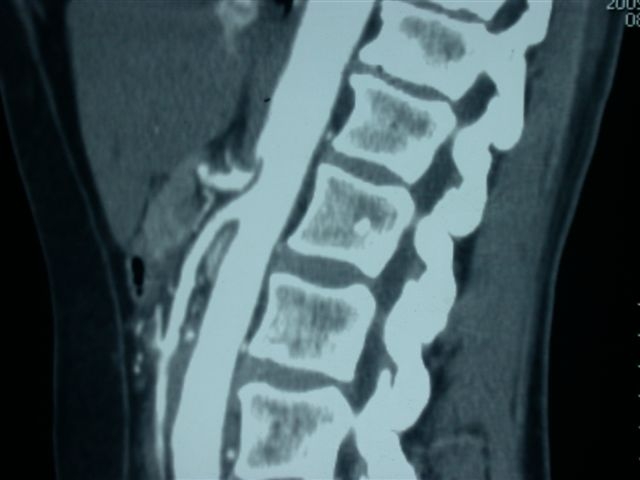|
Back to Annual Meeting Posters
The Contemporary Management of the Celiac Artery Compression Syndrome
Mark Friedell, MD1, Todd Moore, MD1, Steve Eubanks, MD2, Daryl Wier, MD3.
1University of Missouri Kansas City School of Medicine, Kansas City, MO, USA, 2Florida Hospital Orlando, Orlando, FL, USA, 3Orlando Health, Orlando, FL, USA.
Contemporary Management of Celiac Artery Compression Syndrome
OBJECTIVE: Historically the management of celiac artery compression syndrome (CACS) involved diagnostic arteriography and open abdominal surgery with repair of the celiac axis. Today the diagnosis and treatment are minimally invasive. Few such reports exist in the literature. We present our experience with the contemporary management of this clinical entity.
METHODS: Three consecutive cases of CACS were retrospectively reviewed. All patients were women with an average age of 50 (range, 38-63 years). Common to all were: 1) the presence of intermittent daily epigastric pain exacerbated by eating and 2) an associated weight loss. In one patient, an extensive workup led to laparoscopic cholecystectomy which did not give pain relief. Another patient underwent an unrevealing diagnostic laparoscopy. All patients underwent a variety of diagnostic studies including ultrasound and nuclear studies of the gallbladder as well as upper and lower GI endoscopy. Two patients underwent mesenteric duplex ultrasound studies which showed velocities consistent with a significant celiac stenosis. In all patients an eventual CT arteriogram of the abdomen showed a high-grade stenosis at the origin of the celiac axis. (See Figure). By exclusion, the diagnosis of CACS was ultimately made.
RESULTS: All patients underwent laparoscopic division of the median arcuate ligament (MAL) overlying the celiac axis. The original abdominal discomfort abated from within hours of surgery to several days post-operatively. No patient required postoperative evaluation of the celiac axis.
CONCLUSIONS: These three cases demonstrate that the management of CACS can now be done successfully in a minimally invasive fashion. The diagnostic tools are noninvasive--CT arteriogram and mesenteric ultrasound-- and the treatment is laparoscopic division of the MAL. Stent placement in the celiac axis is performed only if symptoms and a stenosis persist postoperatively. 
Back to Annual Meeting Posters

|

